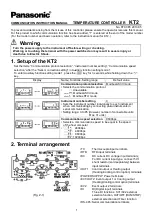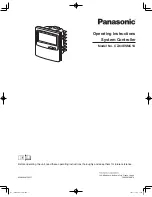
ENGLISH
PAGE
15
BLOCK DIAGRAM DESCRIPTION
Protection
VCAs (6) and VCEQs (7)
Each channel has its own simulation and protection process.
Each audio channel contains a combination of controlled gain stages (let's call them VCA’s as in our
analogue circuitry). These VCA's are embedded into complex composite structures in order to change
their basic operation into frequency selective attenuation. This operation is similar to that of a voltage
controlled dynamic equaliser (VCEQ).
Each VCEQ and VCA is controlled by the synthesis of several signals issued from the various detection
sections. That synthesis is in fact the envelope of those signals, with an optimised release and attack
time for each VCEQ and VCA (depending on its frequency range and the cabinet selected).
Displacement control (8)
The sense input signal is sent to a shaping filter producing a signal whose instantaneous amplitude is
proportional to the voice coil excursion. This signal, after rectification, is compared to a preset threshold
matching the maximum usable value, as determined from laboratory measurements.
Any part of the signal exceeding the threshold is sent to the VCEQ control buffer while the VCEQ acts as
an instantaneous limiter (very short attack time) to prevent displacement from overriding the maximum
permissible value.
Temperature control (9)
Each sense signal is fed into a shaping filter (one per transducer), each one producing a signal
proportional to the instantaneous current flowing into the voice coil of the transducer. After rectification,
this signal is integrated with attack and release time constants equivalent to the thermal time constants of
the voice coil and chassis, producing a voltage, which is representative of the instantaneous temperature
of the voice coil.
When this voltage reaches the threshold value corresponding to the maximum safe operation
temperature, the VCA becomes active to reduce the Audio signal level and limit the effective temperature
to fall under the maximum usable value.
In order to avoid detrimental effects induced by very long release time constants coming from the
temperature detection signal (level being reduced for an extended period, « pumping » effects...), the
detection signal is modulated by another voltage integrated with faster time constants matching the
sound level subjective perception. This allows the controller to reduce the effective operation duration of
the temperature limiter and make it sound more natural, while the efficiency of protection is fully
preserved and operation thresholds are unaffected (kept as high as possible).
Physiologic Dynamic Control (10)
The so-called Physiologic Dynamic Control is intended to avoid unwanted effects as a result of a too long
attack time constant. By anticipating the operation of the temperature limiter, it prevents a high level
Audio signal appearing suddenly then being kept up for a period, which is long enough to trigger the
temperature limiter. Without this, a rough and delayed gain variation would result which would be quite
noticeable and unnatural.
USER MANUAL LOAD2_22
DATE: 03/12/2004
















































